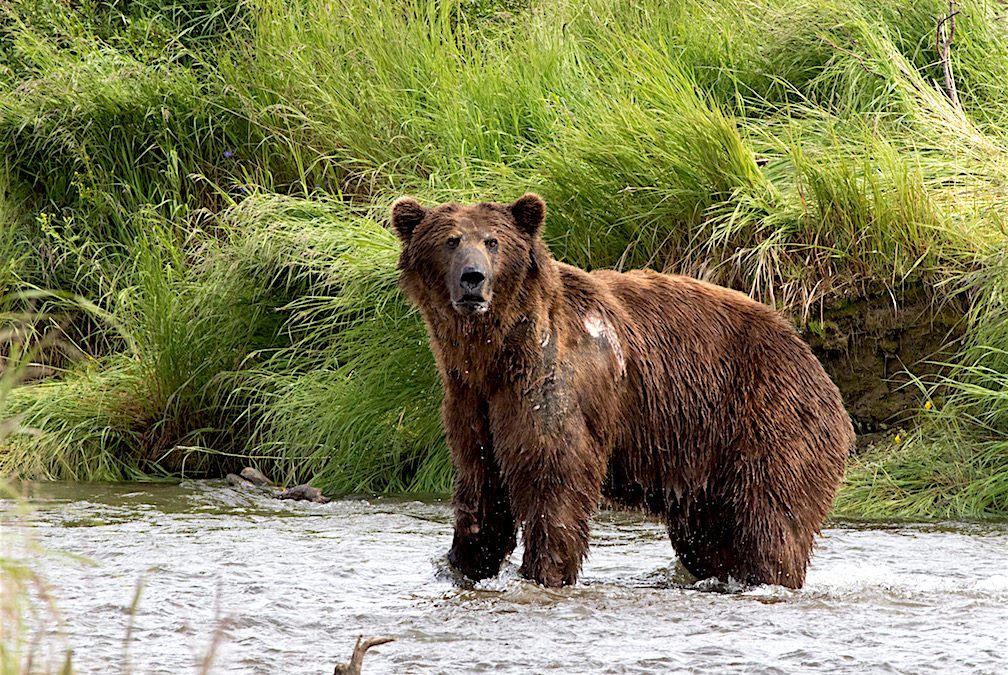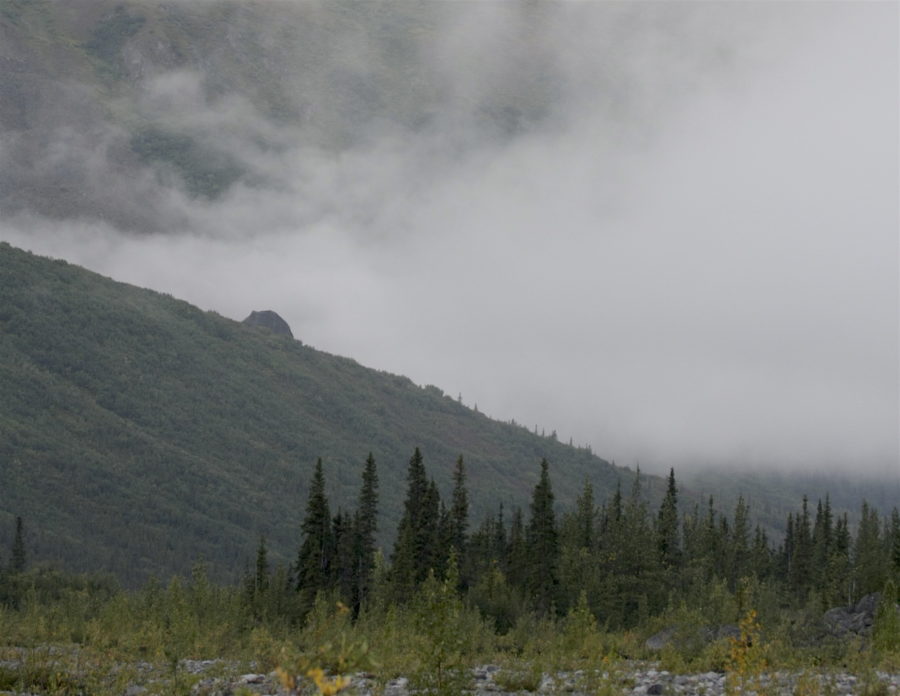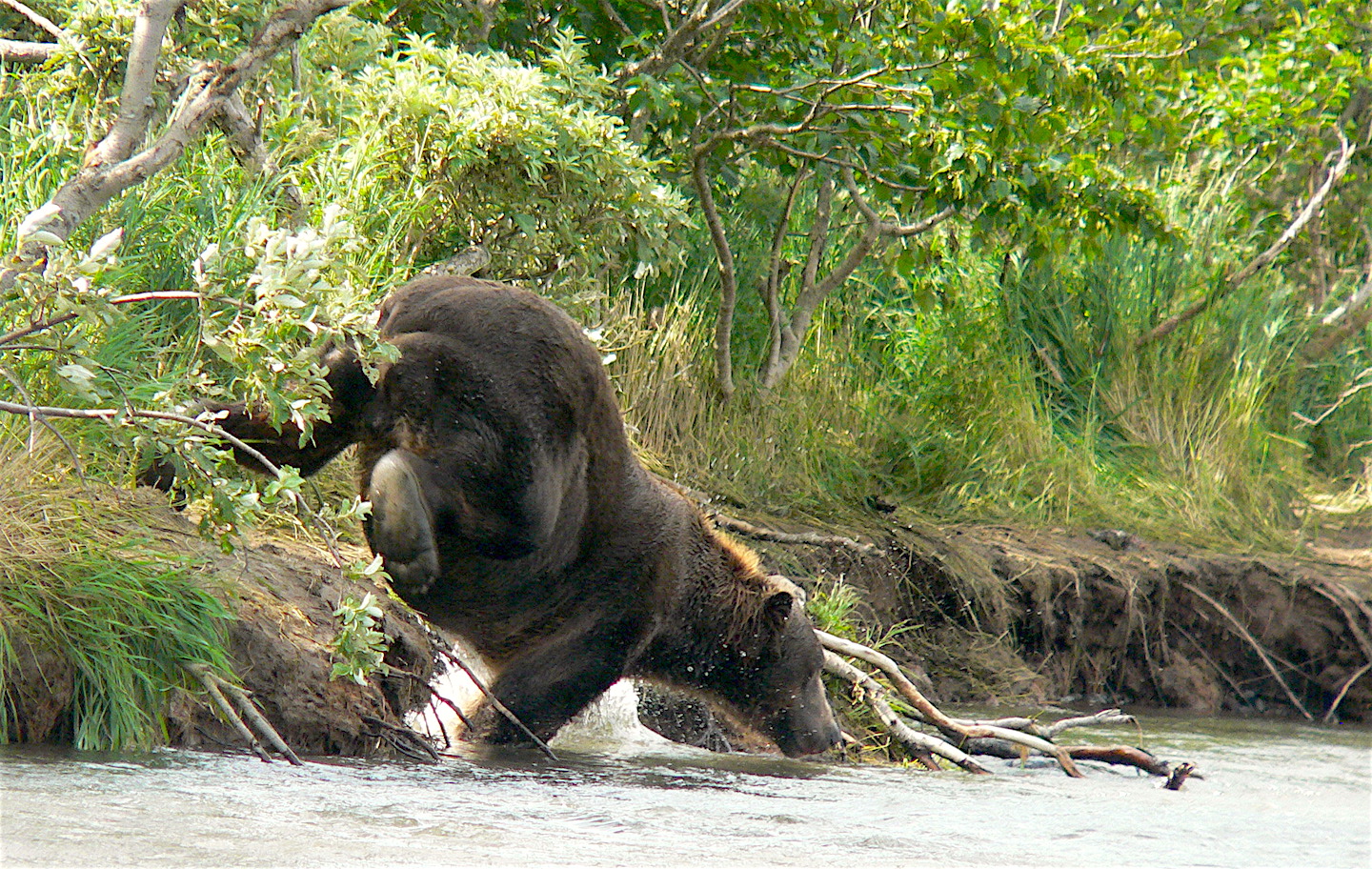“What would such a small gal want with such a big gun?”
“That thing is gonna knock you over.”
“Can you even hold onto that rifle?”
“That gun is going to rock you!”
These are the reactions I hear with each increasing rifle caliber I choose.
Not one of these doubtful remarks crosses my mind when I have to back up a bear hunter in thick brush. Or during the occasional bear charge. In those moments, recoil is all but irrelevant.
Early in my career I used a Winchester Model 70 338. It worked wonderfully backing up moose hunters and on personal caribou hunts. Once I started guiding bear hunters the 338 seemed a bit underpowered. So I gave it up and began carrying my first Ruger Alaskan chambered in the 375 Ruger. It quickly became my rifle of choice due to its performance and weight (as it weighed just 8 lbs once the stock was cut down). It was durable and resilient, surviving the abuse a guide rifle on the Alaskan Peninsula must endure. I relied on it for years: using it to back up moose and bears hunters as well as on most all personal hunts.
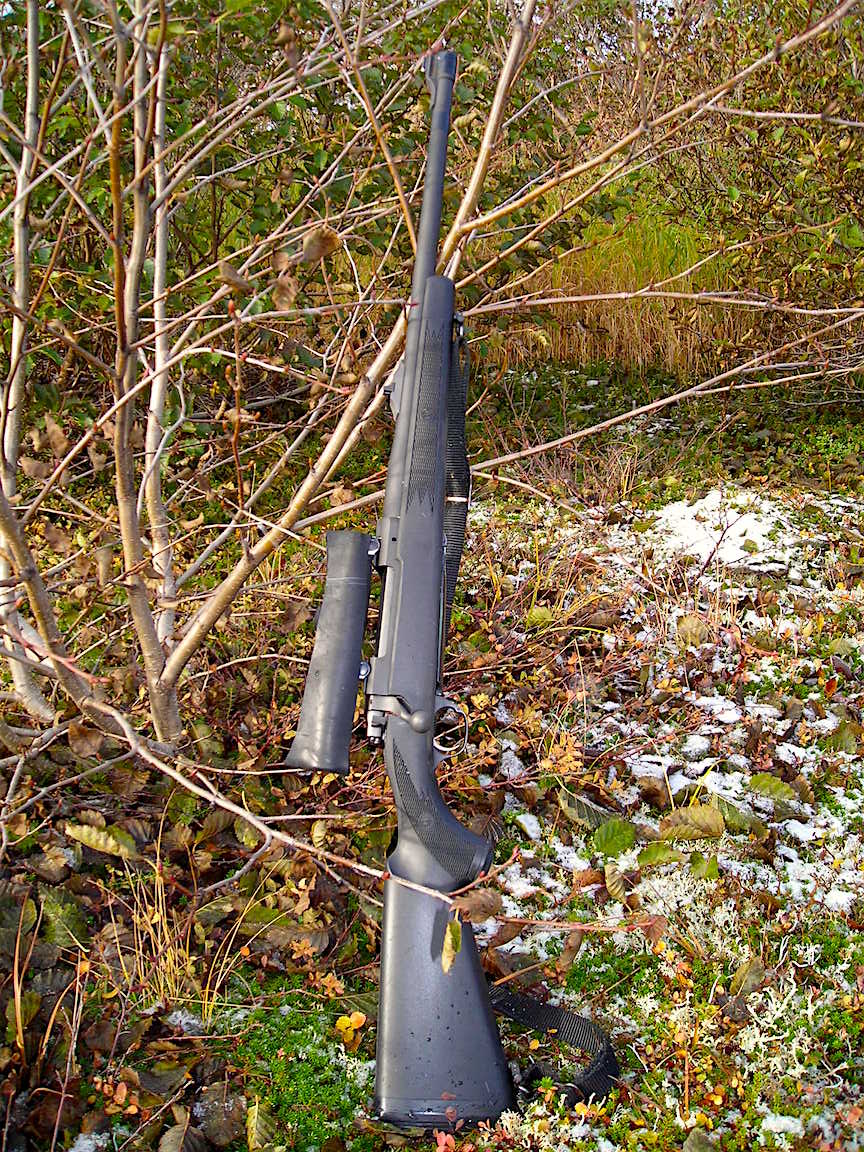
Tia’s rifle worked perfectly for years until she discovered it wouldn’t cycle her new, flat-nosed bullets when she operated it fast. Very fast.
I grew attached to that rifle. But my attachment waned when it failed me. The failure was actually due to bullet choice, but damage had been done. The rifle had let me down when I needed it most, when my life was at stake, and I’d never truly trust it again.
Ten years ago I was guiding a father-son moose hunt. The father shot a magnificent bull right off the spotting hill. It died on a gravel bar next to the river. We spent the day toting hundreds of pounds of meat, hide and antler back to camp and woke exhausted but ready to do it over again the following day. The son, Tim, eager for his chance, wanted to hunt off the very same spotting hill. I couldn’t persuade him to try a different one despite the fact that accessing the spotting hill meant walking 200 yards or so from the moose gut pile. So what we were up against was this–We had left a moose carcass overnight on a gravel bar. All gravel bars in this part of the world are essentially bear freeways in September. The question wasn’t would a bear be on it but rather how many.
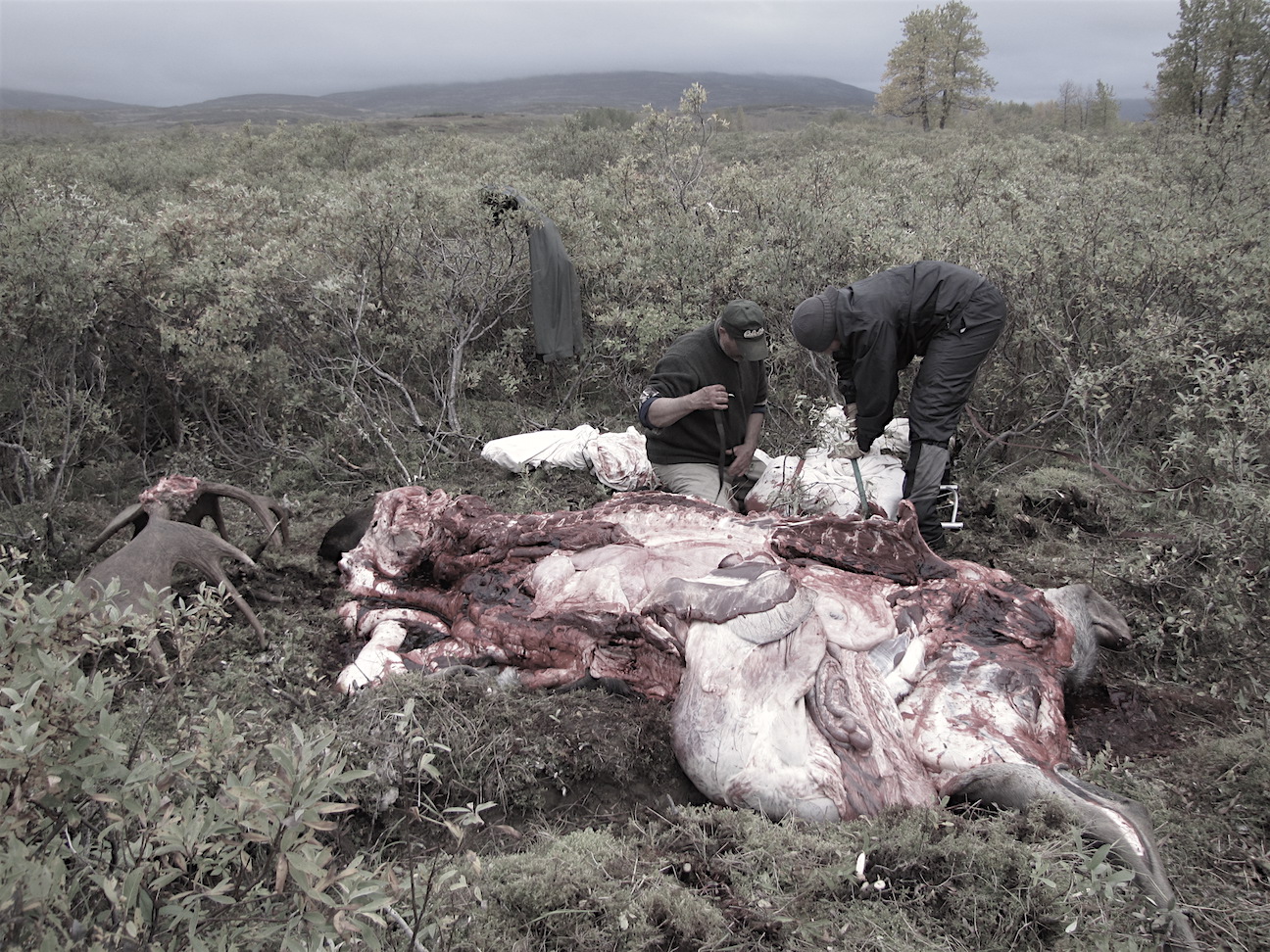
Even when stripped of every edible morsel, a moose carcass provides plenty of incentive for bears to claim it. The color intensity of this photo has been dialed down lest we unsettle the constitutions of our more delicate readers.
You might be wondering why didn’t we just use a different spotting hill and in hind sight we should have. But growing up on the Alaskan peninsula and guiding here makes bear encounters inevitable. It’s akin to the calculated risk of driving your car into a city. Bears are not creatures to be feared but rather respected and understood. Observing and studying bear behavior is fascinating and educational, not to mention essential when your job involves daily encounters with some of the world’s largest bruins. However, the behavior of the particular one we were about to meet was not typical of a coastal brown bear! Calculated risks in mind, I grabbed a flare gun to shoot into the sky before approaching the carcass and a few extra rounds for my 375. The packer and Tim’s exhausted father stayed back in camp to rest, clean-up and help load the meat into the soon-to-be-arriving airplane once the fog lifted.
The day was flat calm. Not a breath of wind rustled the crispy alder leaves. A thick mist hung through the valley, enveloping everything with a spooky hush. No sounds of bird or beast, just the rushing of the river nearby and the gravel under our wader clad feet as we headed towards the spotting hill.
My bear senses were on high alert as we approached the kill site through the windless white wall of morning fog. I was torn between my desire to be a quiet hunter and my desire to not surprise a feasting bear. We began to talk a little louder than normal. “Okay Tim, we’re getting close, I am putting a precautionary round in my rifle. Then I am going to shoot this flare gun over the area of the kill site.”
Other than the blast of a cracker shell, there was no sound. As close as we were, I still couldn’t see the carcass for all the penetrating wall of mist.
“I’m losing my nerve and inclination to go any closer.” I told Tim. Our typical route to the spotting hill would take us quite near the moose carcass. I continued on, “The most passable section of river is nearer the carcass but I say we cross down here despite it being deeper and swifter.”
It was looking like we might just have been bear-anoid and now our bigger challenge would be crossing the swiftly moving channel. I took the round out of my chamber in order to safely cross. Once again I was reassessing my decision about the section of river I’d been forced to choose but it seemed the least of two evils. Stumbling and fighting the current, we waded across and away from the imminent danger — or so I thought.
Because we had crossed farther down river than normal, we were forced to parallel a steep, alder-choked bank for 80 yards. Our attention was absorbed clinging to alders, trying not to slip off the muddy bank into the swift water of the river directly below us.
Reaching a relatively flat, open section before heading up the spotting hill I breathed out a great sigh of relief. Just then a thunderous roar came from directly behind us. I spun around and saw a bear 50 yards away and in full charge. Bears seldom roar while charging. They huff or they send out a sound from their lungs; a guttural whuaaa whuaaa whuaaa. But when an angry, 1,000-pound beast truly roars it causes the hair to stand up on the back of your neck. It affects your stomach the same way zero gravity does. You can feel the reverberation of such a deep, primal roar in your very guts.
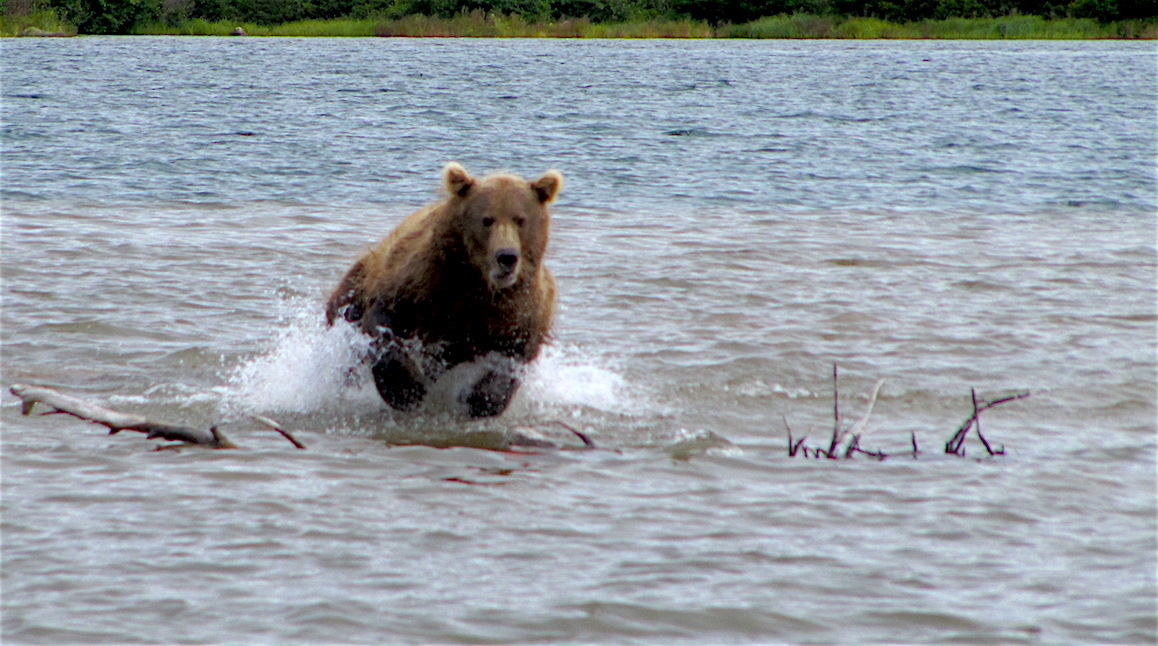
According to Tia, you can feel as well as hear a charging brown bear. Getting a sharp photo is at least as difficult as getting your rifle loaded and on target. This bear is merely charging a salmon. A real charge, Tia says, looks a lot different. We’ll take her word for it.
I threw the rifle to my shoulder, working the bolt as I did—and felt it jam. That is when time slowed. My brain began sending all sorts of useful messages to my body like “Just push the bolt harder” and “Why are you moving so slowly? Can’t you see this large bruin barreling down on you and your client?” I threw my rifle to the ground and reached for Tim’s, realizing I wouldn’t have time to actually shoot before the bear reached us. Before I could bolt a round into his rifle, the bear inexplicably veered 45 degrees and ran into the alder thicket never stopping or even slowing down.
Having given us a fright we would not soon forget and imparting the non-verbal but very clear message that this was his gut pile, the great bruin continued away, crashing through alder thickets. Shaking and not entirely sure he was done teaching us a lesson; I recovered my rifle from the mud and pulled out the jammed cartridge. The case was kinked and the factory bullet shoved down into the powder–that is called adrenaline derived force! Stashing the cartridge in my pocket for further inspection I eased another round into the chamber and waited. Nothing. The only sound was the thump, thump, thump of our own hearts still loud in our ears. Recovering enough to put one leg in front of the other and not hearing more from the bear, we began climbing the spotting hill for what turned out to be a rather uneventful day of moose hunting.
Like each of my near-death experiences, this one had taught me a few lessons. My initial emotion was of utter disappointment in a rifle which had become familiar to me. But upon educating myself I learned the issue was not in the rifle but in bullet choice. The flat-nosed bullets I’d chosen for their backup punch do not reliably feed in most bolt action rifles when rapidly operated. I don’t profess to be a gun expert. In fact a pet peeve of mine is thinking that hunting and guns are synonymous and to know one well you must know the other equally well. Guns are simply a tool. However I have a rich source of information at my fingertips as my father is arguably one of the leading experts on all things guns. He, as well as other gun experts, later explained it in more detail. Flat nose bullets often feed poorly in most bolt action rifles. They bounce off the feed ramp at different angels than pointed or round nosed bullets do. And the problem only gets worse with bigger calibers. So the fault lay in bullet shape as my 375 reliably feeds pointed spitzer bullets perfectly. This is the reason all hunters of dangerous game should run each round through their rifle before trusting it afield.
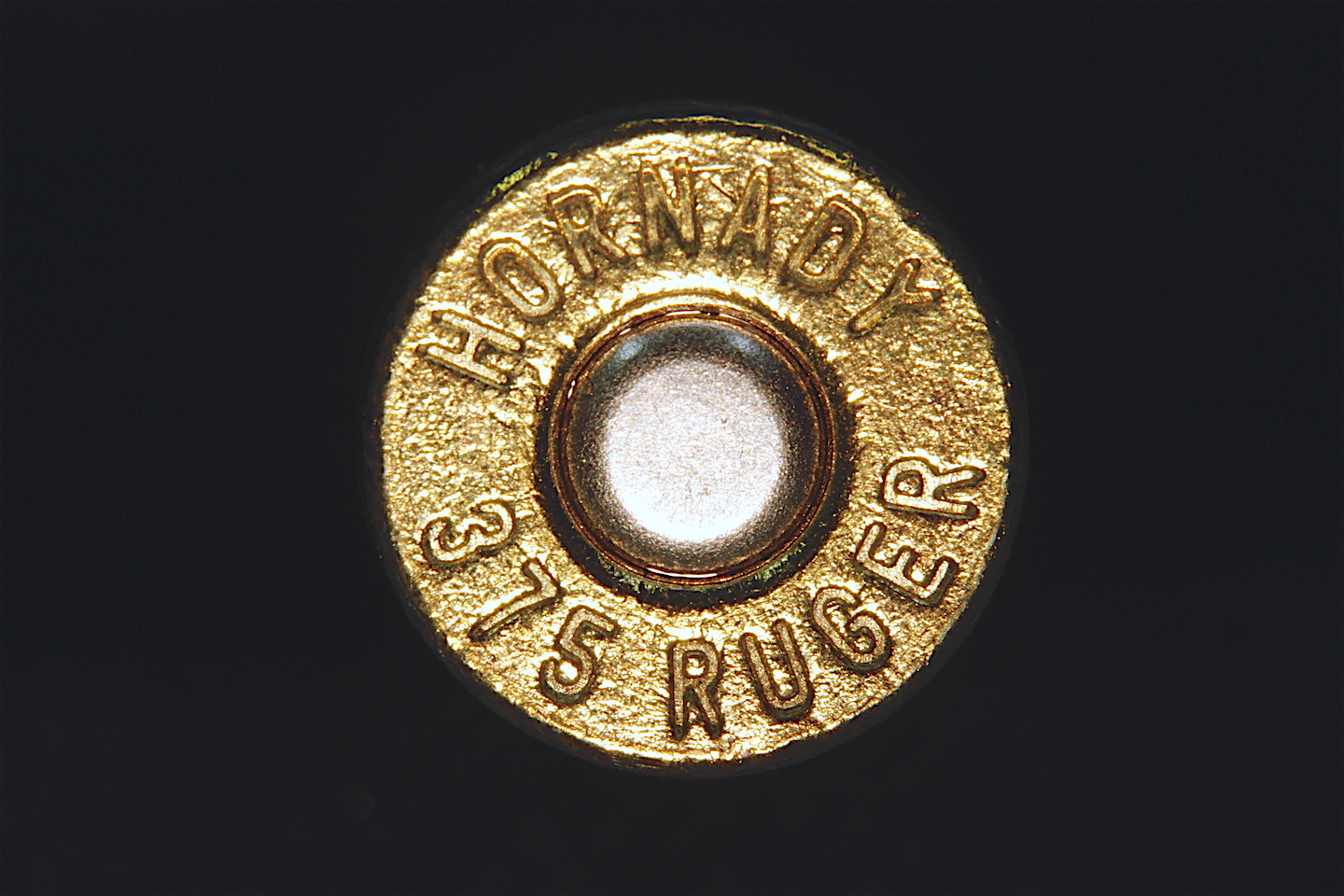
The 375 Ruger is a wonderfully effective round for Alaska moose and bears, but you have to use bullet configurations that cycle smoothly through your rifle’s action. Dramatically flat-nose bullets work better in lever-actions than bolt-actions.
My other lesson was one on bears and how they are each individuals. This bear’s behavior was abnormal as it didn’t come charging out at us from the carcass. Instead he had crossed the river after us and most chillingly had waited for us to have our back to him before he launched his attack. No one was near the carcass at that point in time. It all seemed quite premeditated for an animal who typically acts from instinct. Why he broke off at the last second I am unsure but certainly our good luck.
As for the rifle, even though I realized it was the ammo, not the gun, I’d lost confidence in it. Arriving back in main camp, my feet barely touched the ground as I jumped from the plane and exclaimed “That’s it! I want a 100% reliable rifle!”
You can meet that rifle and read about my first hunt with it next month right here on ronspomeroutdoors.com.

